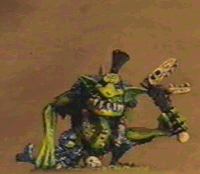
"A dwarf or giant in Scandinavian folklore inhabiting caves or hills." Nowadays, some people have a perception that a troll is a little, friendly, gnome-like creature, but in ancient times, trolls were known as giant beasts.
According to the Oxford Dictionary, the word "troll" was adopted in English from Scandinavian where (in Scandinavian mythology) it meant -- " one of a race of supernatural beings formerly conceived as giants… The Scandinavian fancied himself surrounded by Trolls kind of goblin men, with vast power…" These supernatural beings were of human shape and lived in or near the water. They were beasts that "thrived on the smell and taste of rotted flesh." Trolls had claws, which they used as their primary weapon.
In the Anglo-Saxon culture, trolls were on the same "rung of the ladder" as monsters, ogres, vampires and other legatee of evil. People knew very well about the evil nature of trolls; being afraid of them, humans always tried to stay away from these creatures. Trolls were rumored to have crawled from the depth of hell; they were always compared to the worst creatures that inhabit the face of the earth like snakes and scorpions.
These supernatural beings are depicted in the Old English literature. For example, in Beowulf, the Old English epic, the evil fiend Grendel (the monster that terrorizes Heorot) and his mother are described as water-haunting trolls that live in the "deep water-filled hole in marshy country"(Irving, 47). Ancients were superstitiously afraid of such places. That fear, probably, explains why humans were so scared of these monsters. The poet of Beowulf portrays Grendel's race as being descended from Cain "together with the social and theological implications that go with it"(Irving, 47).
REALMS OF REALITY